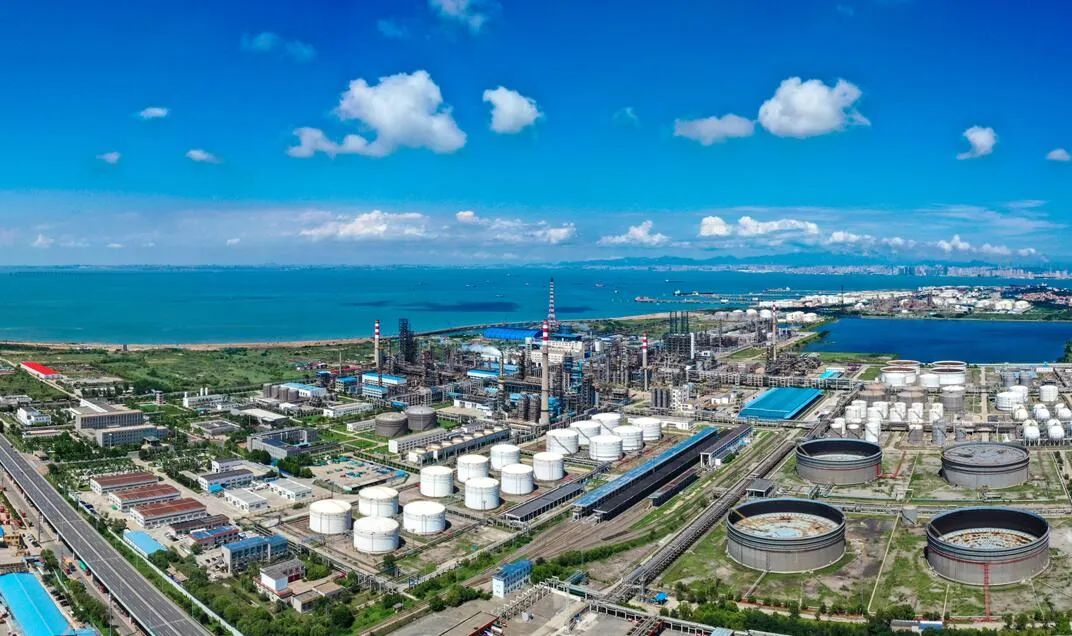免职声明:本网站为公益性网站,部分信息来自网络,如果涉及贵网站的知识产权,请及时反馈,我们承诺第一时间删除!
This website is a public welfare website, part of the information from the Internet, if it involves the intellectual property rights of your website, please timely feedback, we promise to delete the first time.
电话Tel: 19550540085: QQ号: 929496072 or 邮箱Email: Lng@vip.qq.com
摘要:2024年,国内成品油市场消费增长将回归正常态势,但替代规模继续扩大,供应更为充足灵活,市场更为规范有序的趋势不变。经济利好,消费稳中有进2023年12月召开的中央经济工作会议,强调以经济建设作为中心、高质量发展作为首要任务,坚持稳中求进、以进促稳、先立后..
|
2024年,国内成品油市场消费增长将回归正常态势,但替代规模继续扩大,供应更为充足灵活,市场更为规范有序的趋势不变。经济利好,消费稳中有进2023年12月召开的中央经济工作会议,强调以经济建设作为中心、高质量发展作为首要任务,坚持稳中求进、以进促稳、先立后破的总基调,把非经济性政策纳入宏观政策取向一致性评估。2024年,我国经济回升向好在高质量发展的引领下,国内经济宏观政策将夯实经济复苏基础,新质生产力带动全要素生产率提升增强经济增长新动能。预计2024年国内经济延续复苏态势,GDP同比增速达5%,总体呈现出“消费为主、投资回升、出口恢复”态势。消费:激发消费活力、升级消费结构。一是培育壮大数字消费、绿色消费、健康消费等新型消费;二是提振新能源汽车、电子产品等大宗消费;三是增加城乡居民收入,优化消费环境。2024年,我国收入结构将逐步改善释放消费潜力,服务消费仍具韧性,商品消费回暖将带动消费整体温和复苏,消费增速将向历史中枢回归。综合预计,2024年我国社会消费品零售总额同比增长6.3%。投资:扩大有效益的投资。一是基建投资持续发力。增发国债对基建的支撑效应将在2024年持续释放。若2024年一般公共预算赤字和新增专项债合并再多增万亿元,传统类基建将有明显提振,电力、信息技术等新型基建投资将继续高速增长。预计2024年广义基建投资增速可达到10%以上。二是制造业投资稳定增长。2024年,政策支持叠加中美即将进入补库区间,且关键核心技术攻关、节能减排降碳等领域投资规模扩大,预计制造业投资同比增长6.5%。三是房地产投资拖累减弱。以构建房地产发展新模式为突破点,政策多层面齐驱并进提振市场信心。但是,考虑到居民积极性尚未完全调动,叠加人口红利式微,预计房地产投资增速大概率保持微幅负增长。综合预计,2024年我国固定资产投资总额同比增长5.3%。外贸:对外新动能兼顾“走出去”和“引进来”。全球货物贸易继续改善,美国制造商和批发商开启补库存周期扩大进口规模,中亚、非洲、拉美等新兴市场进出口延续较快增长,对我国出口贸易均有拉动。综合预计,2024年我国出口总额同比增长1%。经济增长需要能源支撑。2024年5%左右的经济增速,将成为我国成品油消费总量保持当前规模甚至进一步增长的重要支撑。汽柴煤油消费进一步分化2024年,我国新能源汽车加速发展将使汽柴煤油消费增速进一步分化。我国汽油、柴油和航煤消费所处的发展阶段不同。其中,我国汽油消费处于低速增长且即将达峰期,柴油消费处于峰值平台且稳中回落期,而航煤消费仍处于快速发展期。2000—2019年,我国煤油消费量从871万吨增至3673万吨,年均增速约7.9%。新能源汽车的规模化发展,将进一步拉近我国汽油消费峰、削减柴油消费。2024年,我国新能源汽车预计销量1200万辆,保有量达到3200万辆,对汽柴油的替代量超过2000万吨。在此背景下,预计2024年我国汽油消费量为1.65亿吨,同比增长1.3%;受经济结构转型升级、公转铁、LNG替代等影响,预计我国柴油消费1.96亿吨,同比下降2.8%;得益于旅游业恢复,预计我国煤油消费为3930万吨,同比增长13.1%。
In 2024, the consumption growth of the domestic refined oil market will return to normal, but the replacement scale will continue to expand, the supply will be more adequate and flexible, and the market will be more standardized and orderly. The Central Economic Work Conference held in December 2023 emphasized that economic construction should be the center, high-quality development should be the primary task, adhere to the general tone of seeking progress while maintaining stability, promoting stability with progress, first standing and then breaking, and non-economic policies should be included in the assessment of the consistency of macro policy orientation. In 2024, under the guidance of high-quality development, domestic economic macroeconomic policies will consolidate the foundation of economic recovery, and new quality productivity will drive the improvement of total factor productivity and enhance the new momentum of economic growth. It is expected that the domestic economy will continue to recover in 2024, with a year-on-year GDP growth rate of 5%, and the overall trend of "consumption, investment recovery, and export recovery" will be displayed. Consumption: stimulate the vitality of consumption and upgrade the consumption structure. First, new types of consumption such as digital consumption, green consumption and healthy consumption will be fostered and strengthened. Second, boost new energy vehicles, electronic products and other bulk consumption; Third, increase the income of urban and rural residents and improve the consumption environment. In 2024, China's income structure will gradually improve and release consumption potential, service consumption is still resilient, commodity consumption will pick up and drive the overall moderate recovery of consumption, and consumption growth will return to the historical center. It is estimated that China's total retail sales of consumer goods will increase by 6.3% in 2024. Investment: Expand profitable investments. First, infrastructure investment continued to increase. The supporting effect of additional issuance of national debt on infrastructure will continue to be released in 2024. If the general public budget deficit and new special bonds are combined to increase by another trillion yuan in 2024, traditional infrastructure will have a significant boost, and investment in new infrastructure such as electricity and information technology will continue to grow at a rapid pace. It is expected that the growth rate of broad infrastructure investment will reach more than 10% in 2024. Second, investment in the manufacturing sector grew steadily. In 2024, China and the United States will soon enter the replenishment area, and the scale of investment in key core technologies, energy conservation, emission reduction and carbon reduction will expand, and it is expected that manufacturing investment will increase by 6.5% year-on-year. Third, the drag from real estate investment has weakened. To build a new model of real estate development as a breakthrough point, policies at multiple levels to boost market confidence. However, considering that residents' enthusiasm has not been fully mobilized and the demographic dividend has declined, it is expected that the growth rate of real estate investment will remain slightly negative. It is estimated that China's total fixed asset investment will increase by 5.3% year-on-year in 2024. Foreign trade: Both "going out" and "bringing in" are the new drivers of foreign trade. Global trade in goods continued to improve, US manufacturers and wholesalers began the replenishment cycle to expand imports, and imports and exports in emerging markets such as Central Asia, Africa and Latin America continued to grow rapidly, which boosted China's export trade. It is estimated that China's total exports will increase by 1% year-on-year in 2024. Economic growth needs energy to support it. The economic growth rate of about 5% in 2024 will become an important support for the total consumption of refined oil products in China to maintain the current scale or even further growth. In 2024, the accelerated development of new energy vehicles in China will further divide the growth rate of diesel and kerosene consumption. The consumption of gasoline, diesel oil and jet fuel in our country are in different development stages. Among them, China's gasoline consumption is at a low speed growth and is about to peak, diesel consumption is at a peak and stable decline, and jet fuel consumption is still in a rapid development period. From 2000 to 2019, China's kerosene consumption increased from 8.71 million tons to 36.73 million tons, with an average annual growth rate of about 7.9%. The large-scale development of new energy vehicles will further narrow the peak of gasoline consumption in our country and reduce diesel consumption. In 2024, the sales volume of new energy vehicles in China is expected to reach 12 million, the ownership of 32 million, and the replacement volume of gasoline and diesel exceeds 20 million tons. In this context, China's gasoline consumption is expected to be 165 million tons in 2024, an increase of 1.3%. Affected by the transformation and upgrading of economic structure, rail and LNG replacement, China's diesel consumption is expected to be 196 million tons, down 2.8% year-on-year; Thanks to the recovery of tourism, kerosene consumption in China is expected to be 39.3 million tons, an increase of 13.1%. The market easing pattern remains unchanged, and China's refining capacity will grow. It is expected that in 2024, the net domestic refining capacity will increase by 25 million tons/year, and the total refining capacity will reach 961 million tons/year. Among them, the new capacity of 31 million tons/year, mainly from Zhenhai Refining Phase II (11 million tons/year) and Jurong Island Petrochemical (20 million tons/year). If it is produced according to the plan, it is expected that the national crude oil processing capacity will be 752 million tons, an increase of 1.8%. The output of refined oil products was 451 million tons, up 1.6% year-on-year. Domestic refined oil production growth is still faster than demand, the market is relatively loose. In the next few years, the domestic planning and construction of several refining and chemical integration reconstruction and expansion projects will be put into operation at the same time, some capacity will be replaced and cleared, and the growth of refining capacity will basically end, but the problem of excess refining capacity still needs great attention and serious solution. On the one hand, the continuous and rapid development of the new energy automobile industry makes the demand for refined oil products peak soon, and it will shorten the peak platform period of refined oil consumption and show a rapid decline trend. On the other hand, "reducing oil and increasing" continues to advance, and the excess supply pressure of refined oil products may be alleviated, but the excess pressure is likely to be transmitted to bulk petrochemical products. In the long run, on the demand side, with the accelerated development of new energy vehicles, the peak of domestic refined oil consumption is approaching, and it is likely to fall quickly after reaching the peak; On the supply side, in the case of refining and chemical transformation and upgrading and equipment elimination and replacement, domestic supply remains sufficient and flexible. In this context, the domestic refined oil market will accelerate the reform, the market competition is more intense, the market main body is more diversified, and the market pattern is more standardized. |













